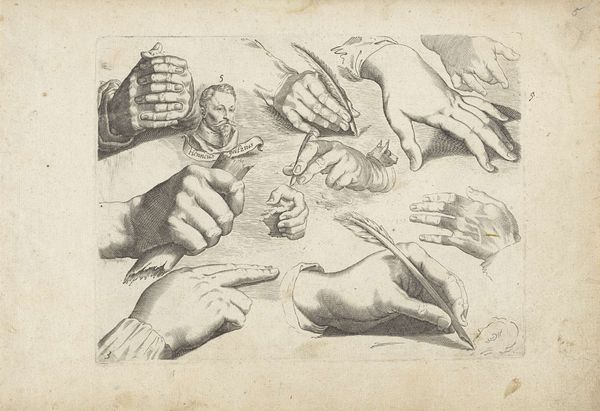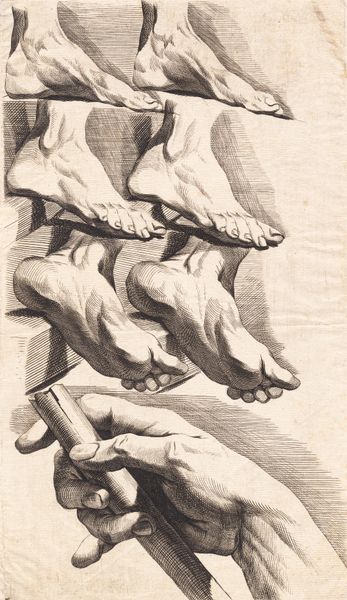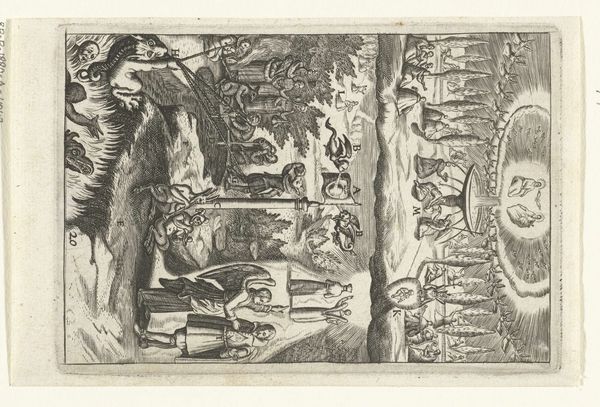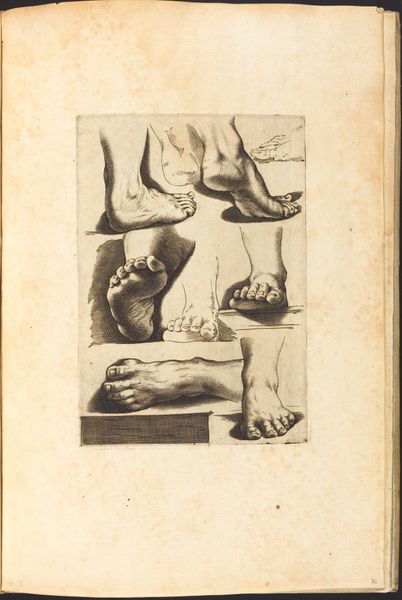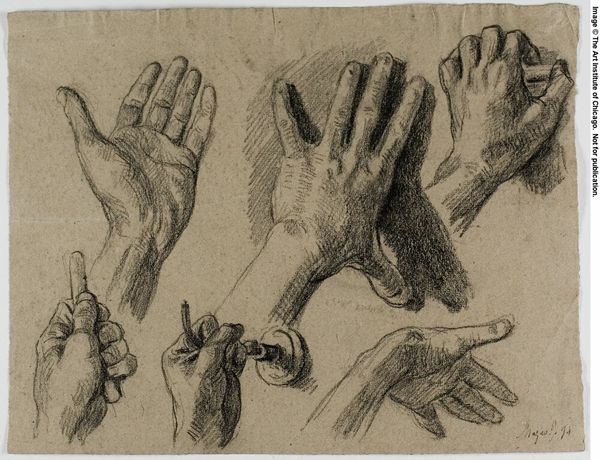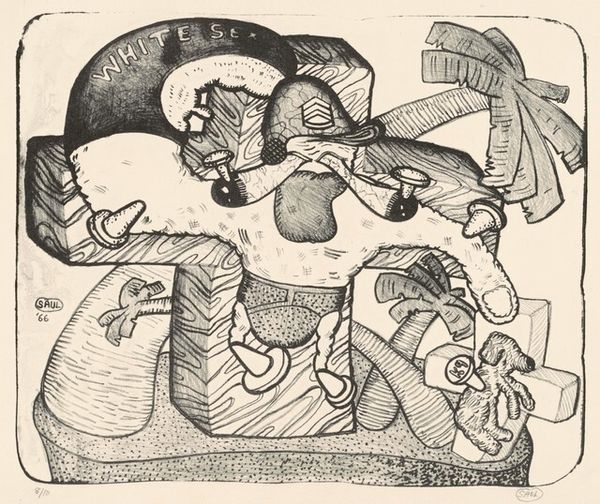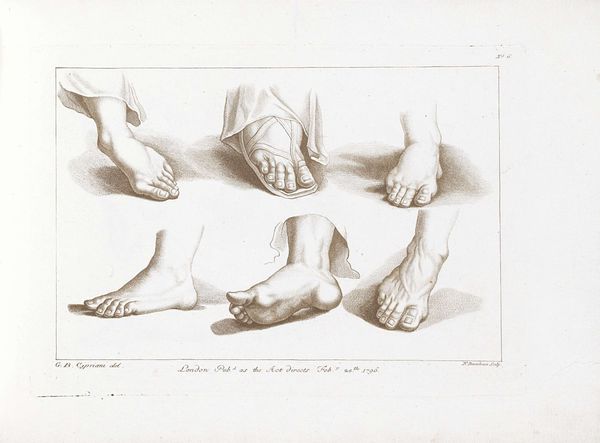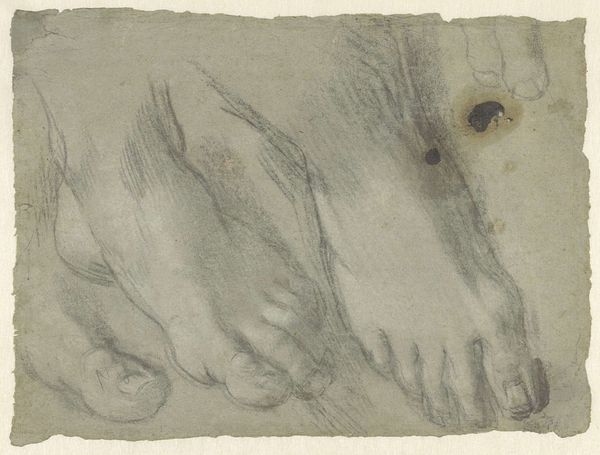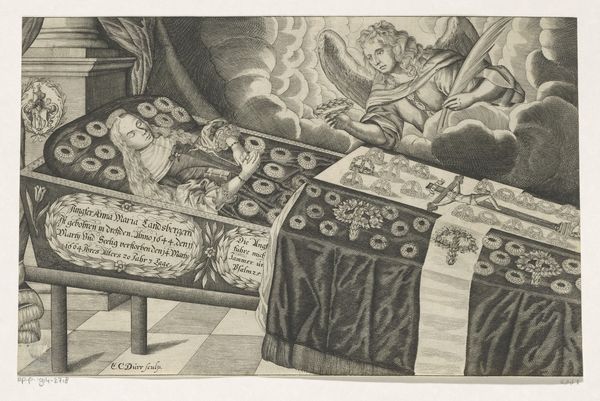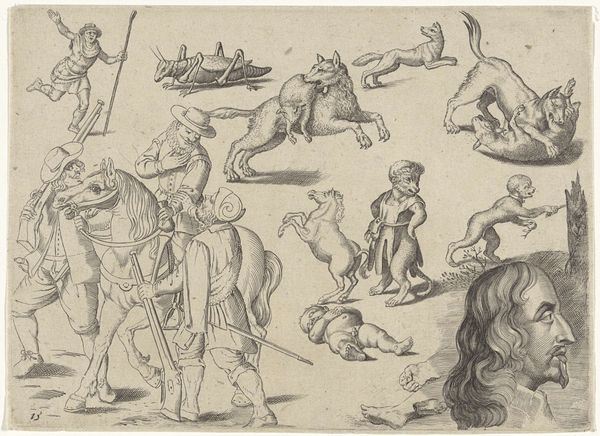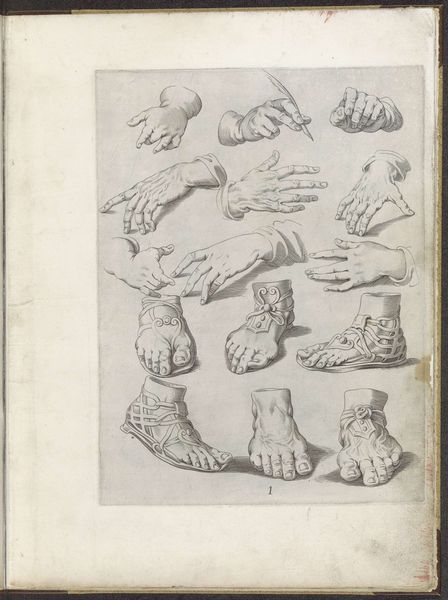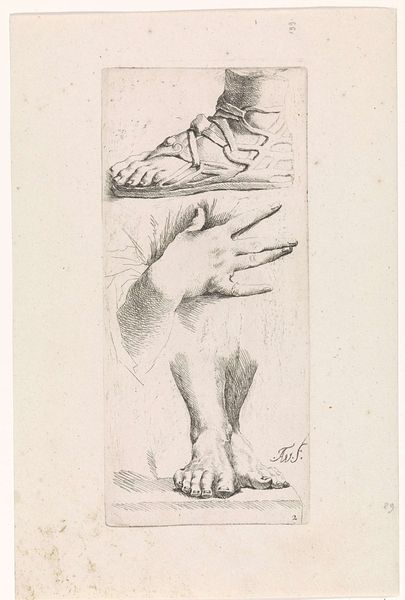
drawing, print, etching
#
portrait
#
drawing
#
baroque
# print
#
etching
#
figuration
#
genre-painting
#
history-painting
#
academic-art
Dimensions: height 163 mm, width 211 mm
Copyright: Rijks Museum: Open Domain
Editor: We’re looking at "Studieblad met tekenvoorbeelden: handen, voeten en een aapje," a study sheet with drawing examples of hands, feet, and a monkey. It’s an etching dating from 1610 to 1672, by Michael Snijders. The assortment of body parts is somewhat unsettling. How do you interpret this work? Curator: It’s certainly a collection, isn't it? But look closer at the relationship between these fragmented bodies and the art academy. Such drawing books codified ways of seeing the body, predominantly a white, male body, establishing a Western canon and a hierarchy of representation that unfortunately excluded many others. What does this sheet tell us about whose bodies were deemed worthy of study and replication, and whose were not? Editor: That’s a really interesting point. It makes me think about the power structures inherent in even the most seemingly objective artistic exercises. So, the inclusion of a monkey then… Curator: It reinforces the established racial and species hierarchies. The monkey is there, arguably, to other non-white human bodies through comparison and subjugation. Its proximity to fragmented human parts emphasizes the historical dehumanization central to colonial exploitation. Where does it situate Black bodies in that period, what artistic strategies did they use to assert their own representation? Editor: So, it's not just a harmless study sheet, but a document that subtly reinforces societal biases and power dynamics through the selection and portrayal of its subjects? Curator: Precisely. The very act of dismembering and displaying these body parts speaks to broader cultural attitudes of objectification, control, and categorization, ideas that should provoke active contemporary interrogation of historic and contemporary social orders. How can art be used to dismantle these orders? Editor: This definitely changes my understanding of the piece. It’s not just about artistic skill, but about the power of representation and the historical context in which art is created and viewed. I never would have picked up on that! Curator: Looking at historical work through the lens of power allows for more engagement in social justice and transformative work through art.
Comments
No comments
Be the first to comment and join the conversation on the ultimate creative platform.
